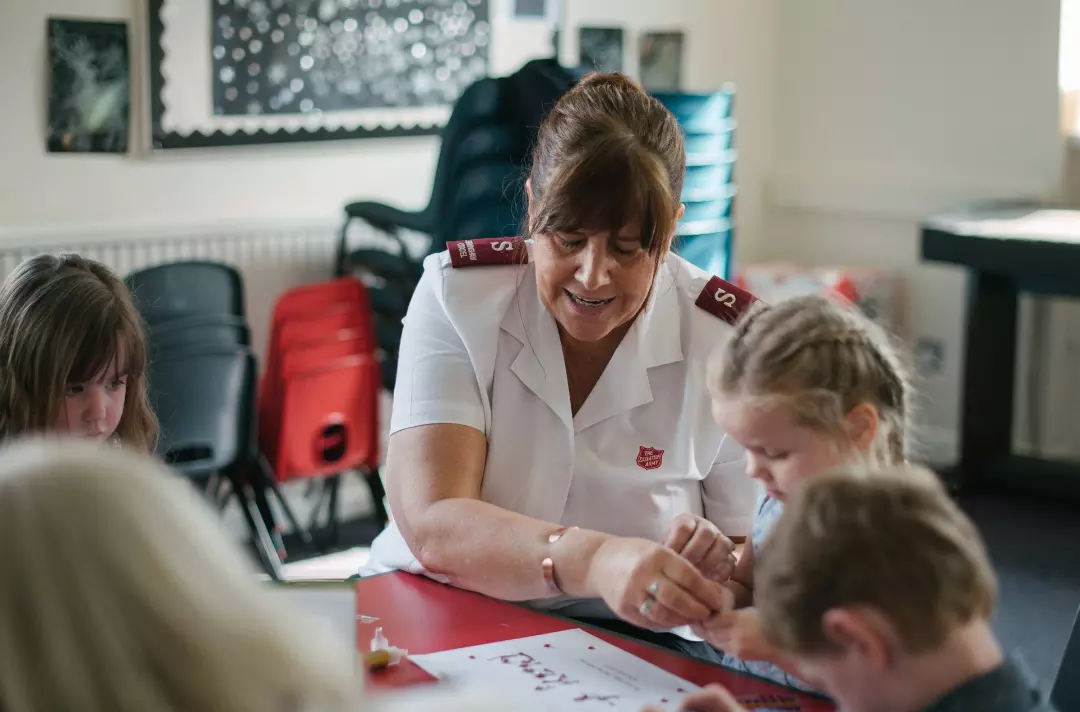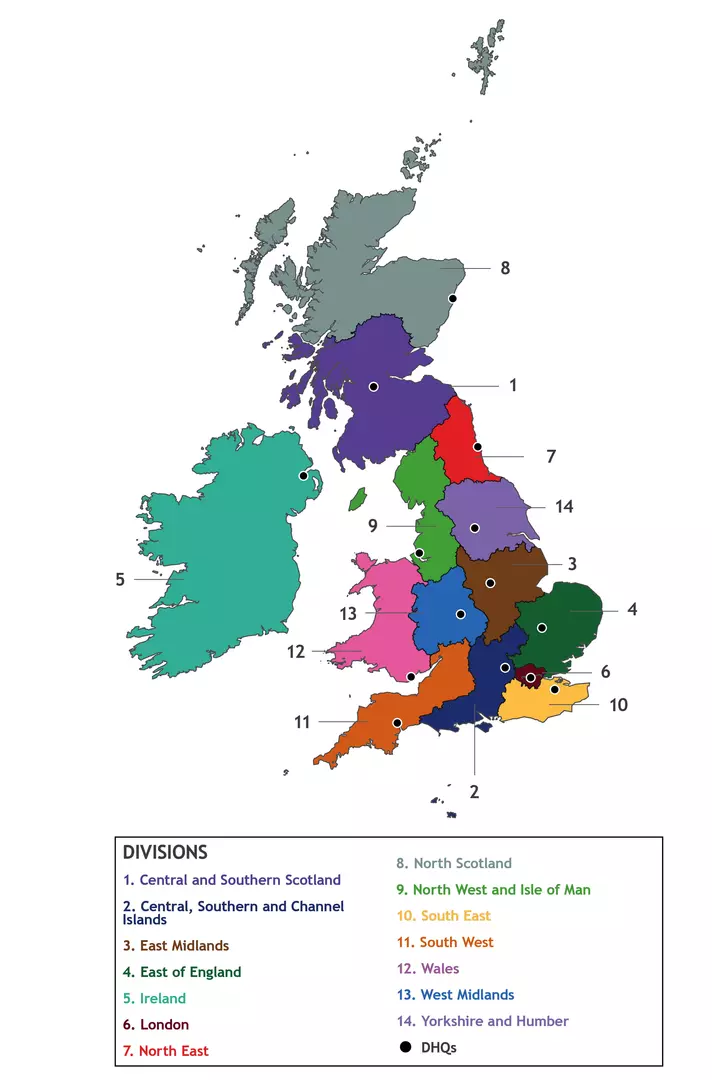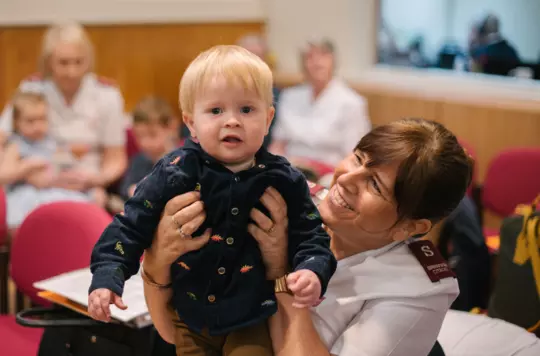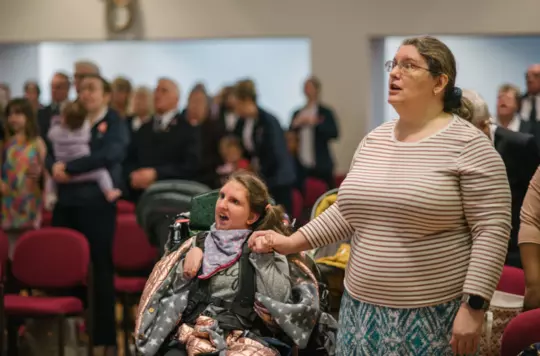8 September 2022
New proposals announced: Strengthening our future
Lieut-Colonel Dean Pallant

Lieut-Colonel Dean Pallant presents the Structure Co-ordination and Design Group’s proposals for the United Kingdom and Ireland Territory.
The Structure Co-ordination and Design Group (SCDG) has worked for the past 20 months to achieve three desired outcomes – transformation, integration and streamlining – towards our territorial vision of ‘Fullness of life for all with Jesus’.
We prayed hard and we’ve listened hard. We’ve been blessed by many excellent ideas and comments from more than 1,500 people who participated in a survey (printed in Salvationist), 25 forums in all parts of the territory, and many other meetings.
You’ve helped us identify barriers that hinder the delivery of God’s mission in your communities. Thirteen Divisional Design Groups worked through the issues and have made proposals. Five Service Design Groups are currently addressing the resulting 84 priority issues.
The SCDG, with the leadership of the territory, have reflected deeply on the mission of our Army in the 21st century and we’re now ready to make proposals.
We’ve heard that, for local mission to flourish, our processes and systems need improvement - many of you told us you find our current approach burdensome. We’ve also heard local mission units (corps, centres, etc) say they need appropriate support and oversight, but while money isn’t the primary motivation for change, our costs must be realistic, prudent and effective. We’ve looked at the projections of our officer and corps strength in the next decade and urgent action is needed.
We must invest more resources (people and money) into ‘local mission delivery’. There is no point having wonderful ‘support and oversight’ if that limits the delivery of our five mission priorities: share the good news; nurture disciples of Jesus; care for creation; serve others without discrimination; seek justice and reconciliation.
We’ve published a lengthy Findings and Proposals Report, which is available for anyone to read. We are committed to continue to listen and reflect before final decisions are taken.
Expand the section below to download the report and further information.
What's being proposed?
- Reducing the number of divisions from 22 (in 2021) to 14 by 2023 and closing some DHQ and regional service centre buildings
- Increasing the investment of people and funding into local mission delivery by ensuring ‘support and oversight’ is more integrated and aware of local mission delivery priorities, for example, increasing the number of practitioners who also have responsibilities for support and oversight
- Strengthening a culture of continuous improvement rather than ‘big bang’ change initiatives
- Reducing the administrative burden on corps officers and local leaders
- Seeking greater integration of Salvation Army work within and between divisions, corps and centres
- Refocusing THQ on local mission priorities through streamlining processes and systems
- That not every division will be the same and not all change has to happen at the same time
The proposals have been endorsed by the UKI Cabinet, International Headquarters and the directors of SATCo. They are currently being consulted upon with DHQ employees who may be impacted by changes. We recognise this will be unsettling, but there is a strong desire to engage with employees in addressing the significant issues raised during the Listening Phase of the project.
What are the proposed divisional changes?
The SCDG recommends the 14 new divisions are formed in an orderly manner beginning in January 2023 and completed by July 2023.

The amount of change envisaged by these proposals differs from division to division.
In some cases, there will be few changes (Ireland; Wales; North Scotland). In a few divisions there are relatively limited changes (North East; North West and Isle of Man; South East; West Midlands).
In other divisions, the vast majority of one division will merge with another division to form a new, larger division (East and West Scotland; Yorkshire North and Tees and Yorkshire South with Humber; North and South London; Devon and Cornwall with Severn and Somerset).
The most complicated area of the territory for forming the new divisions is central England and particularly the Central East Division with the formation of an expanded East of England Division and the new Central, Southern and Channel Islands Division.
The divisional boundary proposals (see map above) generally follow county and local authority boundaries as these are important for developing relationships and working with external partners such as local authorities, ecumenical and interfaith groups.
However, the SCDG received feedback that there should be some exceptions as this would significantly benefit local mission flourishing. Exceptions are proposed for the following corps:
- Scunthorpe, Barton-upon-Humber and Grimsby will come into the Yorkshire and Humber Division rather than remain in Lincolnshire.
- Middlesbrough Acklam, Middlesbrough Citadel, Eston and Guisborough will come into the North East Division rather than Yorkshire.
- Salisbury will come into the Central, Southern and Channel Islands Division rather than move with the rest of Wiltshire into the South West Division.
- The corps at Berwick-upon-Tweed made strong representation to remain part of a Scottish division although they are located in England. The SCDG supports this proposal – the corps will be in the Central and Southern Scotland Division.

While the divisional boundaries are changing, it’s important to remember that they primarily exist for administrative and pastoral purposes and aren’t meant to stop you worshipping and working across them. We encourage you to continue exploring what’s happening in divisions that might be close to you in addition to your own.
It is important to reaffirm that divisional commanders are the TC’s representative in a division and must influence all aspects of Salvation Army work even though they do not line-manage centralised services, central services or the operations of subsidiaries. There is no Salvation Army work within the division that is not the DC’s concern.
The territory is committed to embedding a culture of continuous improvement into the way we work. A key aspect of this will be focusing all DHQ and THQ units and departments on enabling local mission flourishing.
THQ team members, such as HR business partners, learning and development officers, regional accountants, property and communications staff, while not line-managed by DHQ, will understand themselves to be colleagues with divisional team members. DHQ teams will understand that most THQ staff also have responsibilities to support central and centralised services. THQ team members serving the division should be fully integrated and accepted as part of a team who, together, enable local mission delivery.
How can I be involved?
The SCDG has released a fuller report detailing the proposals that you can download (please see above). Please remember that no decisions requiring consultation with employees impacted by the changes have been taken.
The SCDG also welcomes comments and questions from anyone connected to The Salvation Army. You can do this by emailing transformation@salvationarmy.org.uk and you will receive a reply.
The next few months will be challenging so, most importantly, the territorial leadership and the SCDG ask for your prayers. No change programme is ever easy. However, we know God is with us and has guided us so far. We have confidence to keep moving forward.
Change is always with us. Continuous improvement has always been a characteristic of faithful Christians. We are never satisfied with the status quo. We, and our Army, can always be more Christlike. There are always new opportunities to grow God’s Kingdom on earth, as it is in Heaven.
With confidence in God – Father, Son and Spirit – we commend this report to you and ask for your prayers and assistance in achieving these ambitious plans.
Written by

Lieut-Colonel Dean Pallant
Secretary for Communications
Discover more

Lieutenant Wan Gi Lee considers the challenge of church growth.



